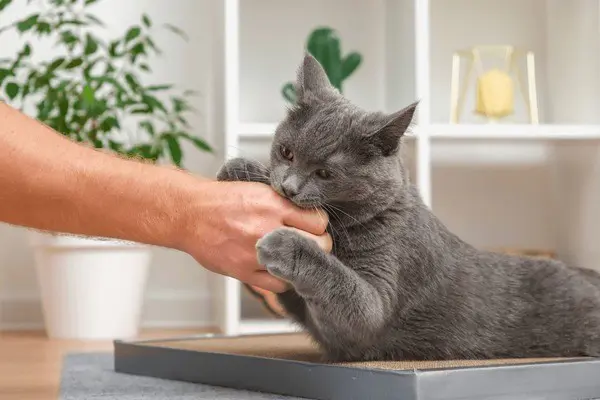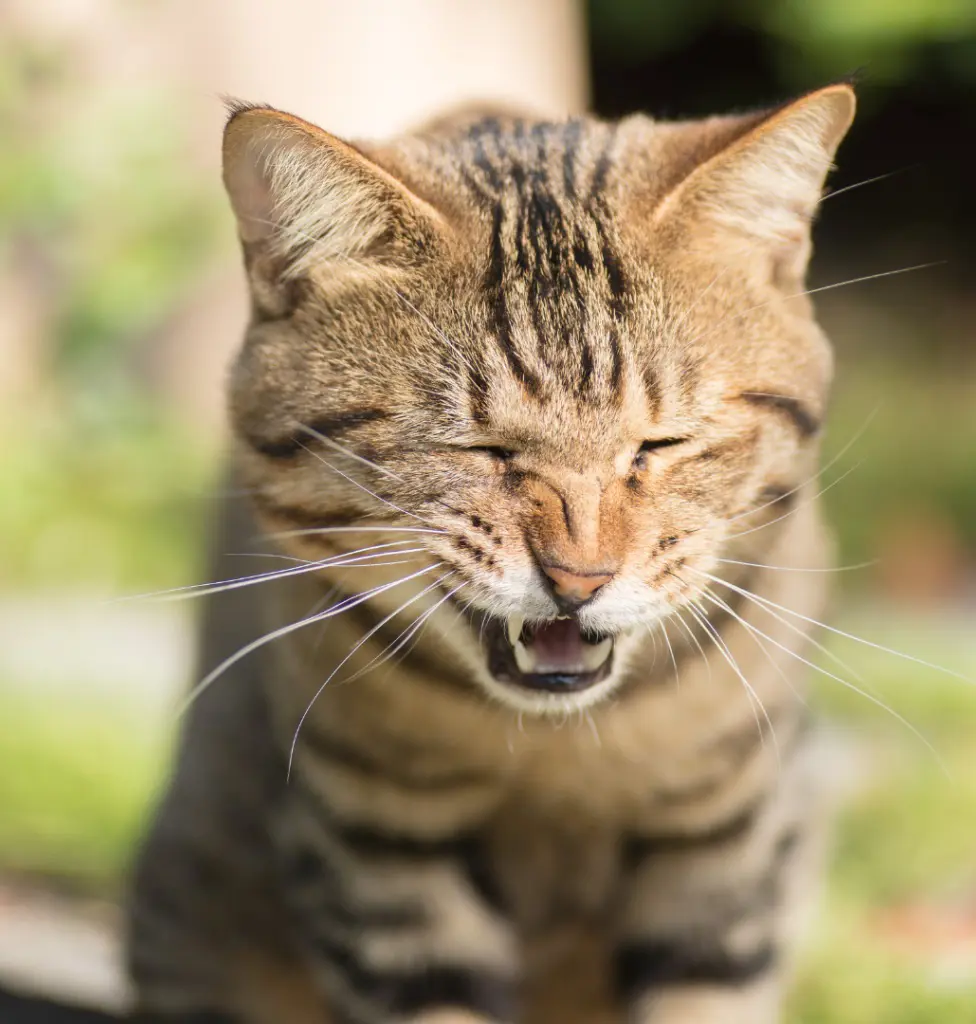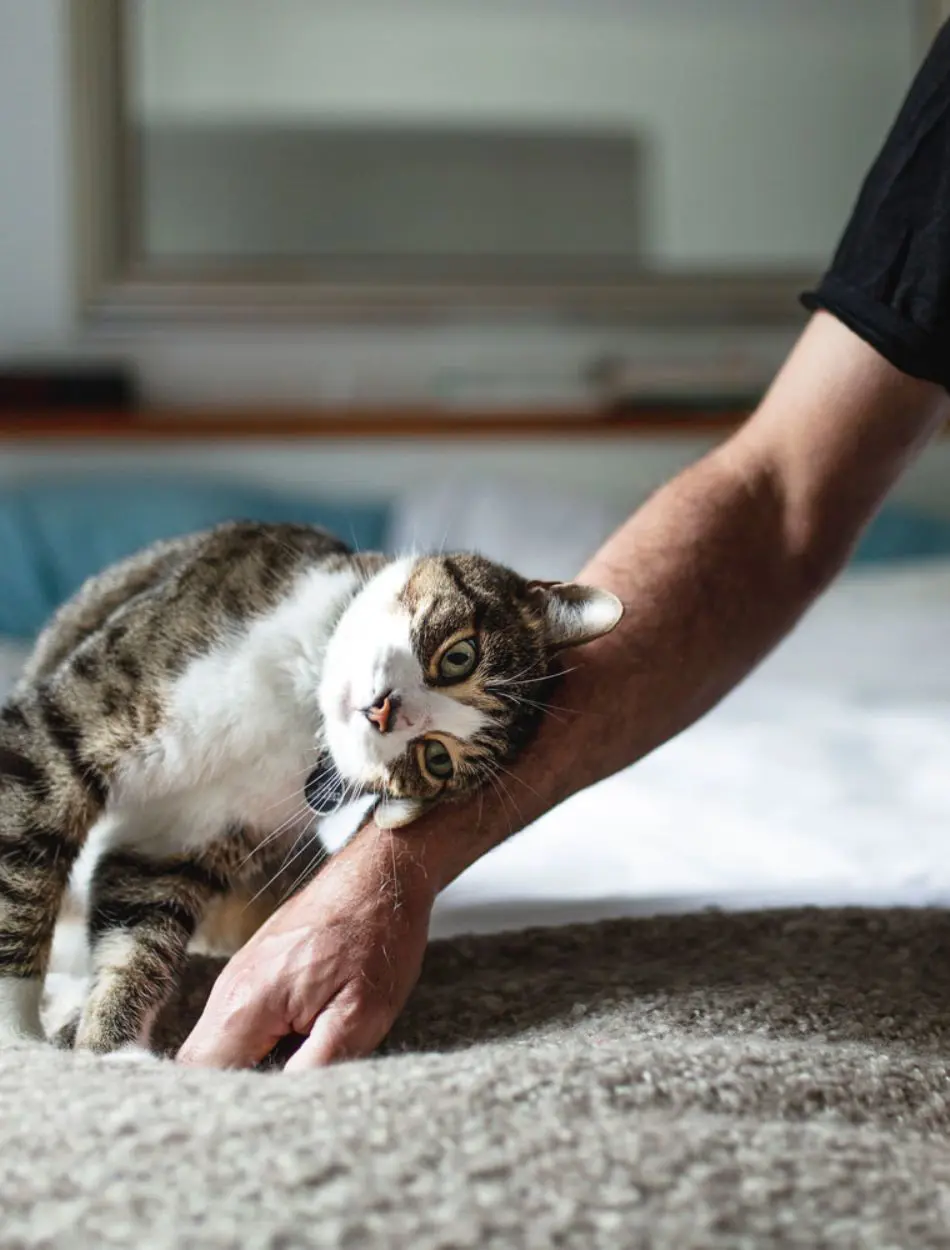Why Cats Bite and How to Prevent It: A Comprehensive Guide

Cats, with their mysterious and often unpredictable behavior, have long fascinated humans. While they are beloved pets known for their affectionate and playful nature, they can sometimes exhibit aggressive behaviors, such as biting.
Understanding why cats bite and learning how to manage and prevent this behavior is crucial for maintaining a harmonious relationship with your feline friend. This comprehensive guide explores the reasons behind cat biting and offers practical strategies to stop it.
Why Do Cats Bite?
Cats bite their owners for a variety of reasons, ranging from natural instincts to environmental factors. Understanding these reasons can help cat owners address the underlying issues and prevent future occurrences.
1. Play Aggression
Kittens and young cats often engage in play aggression, which is a normal part of their development. This behavior mimics hunting, with biting and pouncing being integral parts of their play. While it is natural, it can be painful and undesirable for humans.
2. Fear or Anxiety
My cat may bite me when I pet him which is feeling threatened or anxious. This reaction is often a defensive mechanism to protect themselves from perceived danger. Triggers can include loud noises, unfamiliar people or animals, and sudden movements.
3. Pain or Illness
When a cat is in pain or discomfort, it might resort to biting as a way of expressing its distress. Conditions like arthritis, dental issues, or injuries can lead to such behavior. It's crucial to rule out medical problems if your cat's biting is sudden and uncharacteristic.
4. Overstimulation
Cats have a threshold for physical interaction, and when this limit is exceeded, they may respond with a bite. Petting-induced aggression occurs when a cat enjoys being petted but suddenly feels overwhelmed or overstimulated.
5. Territorial Behavior
Cats are territorial creatures, and they might bite to defend their space from intruders. This behavior is more common in multi-cat households or when a new pet is introduced.
6. Redirected Aggression
This type of aggression occurs when a cat cannot reach the source of its frustration or anger, such as seeing another cat outside the window. The cat then redirects its aggression towards a nearby person or pet, resulting in a bite.
7. Lack of Socialization
Cats that were not properly socialized as kittens may exhibit fear and biting behaviors. Early socialization helps kittens learn how to interact with humans and other animals without resorting to aggression.
8. Maternal Instincts
Mother cats are highly protective of their kittens and may bite if they feel their offspring are threatened. This behavior is instinctual and generally subsides as the kittens grow and become more independent.
How to Stop Cat Bites: Fix Cat Biting Problems
There is a reason why home cats nip suddenly which is usually due to the triggers. Here are several effective methods to help stop your cat from biting.
1. Provide Adequate Play and Exercise
Ensuring your cat gets enough physical and mental stimulation can reduce play aggression. Interactive toys, laser pointers, and puzzle feeders can keep your cat engaged and expel excess energy. Regular play sessions also strengthen the bond between you and your cat.
2. Recognize and Respect Your Cat's Boundaries
Learn to recognize the signs that your cat is becoming overstimulated or agitated, such as flattened ears, twitching tail, or dilated pupils. When these signs appear, stop any interaction and give your cat space. Respecting your cat’s boundaries can prevent petting-induced aggression.
3. Create a Calm Environment
Minimize stressors in your cat’s environment by providing hiding spots, using calming sprays or diffusers with pheromones, and maintaining a consistent routine. A calm and predictable environment can reduce anxiety-related biting.
4. Handle with Care
Always handle your cat gently and avoid sudden movements that could startle it. When introducing new people or animals, do so gradually and under controlled conditions to prevent territorial or fear-based aggression.
5. Train Using Positive Reinforcement
Positive reinforcement can be a powerful tool in modifying your cat’s behavior. Reward your cat with treats, praise, or petting when it displays desirable behaviors. Avoid using punishment, as it can increase fear and aggression.
6. Provide Scratching Posts and Safe Outlets
Offer appropriate outlets for your cat’s natural behaviors, such as scratching posts and climbing structures. These can help your cat expend energy and reduce the likelihood of biting out of frustration or boredom.
7. Socialize Your Cat Early
If you have a kitten, expose it to different people, environments, and gentle handling from a young age. Early socialization helps cats become well-adjusted adults less prone to fear and aggression.
8. Consult a Veterinarian
If your cat’s biting behavior is sudden or severe, consult a veterinarian to rule out medical issues. Pain or illness can be a significant factor in aggressive behavior, and treating the underlying condition can resolve the problem.
9. Consider Professional Help
For persistent biting issues, seeking the help of a professional cat behaviorist can be beneficial. They can provide tailored advice and training techniques to address your cat’s specific behavior problems.
Know & End Cat Biting Issues in Specific Scenarios
Play Aggression
To manage play aggression, redirect your cat’s biting behavior towards appropriate toys. Use interactive toys that mimic prey, such as feather wands or motorized mice, to satisfy their hunting instincts.
Engage in regular play sessions to tire your cat out and reduce the likelihood of them biting out of boredom or excess energy.
Fear or Anxiety
Creating a safe and comforting environment is crucial for cats prone to fear or anxiety. Ensure your cat has access to quiet areas where it can retreat and feel secure. Introduce new experiences slowly and positively, using treats and gentle encouragement.
Consistency in daily routines can also help reduce anxiety.
Pain or Illness
Observe your cat for signs of pain or discomfort, such as changes in eating habits, grooming behavior, or movement. Schedule regular veterinary check-ups and address any medical issues promptly.
Pain management and treatment of underlying health problems can significantly reduce biting caused by discomfort.
Overstimulation
Pay attention to your cat’s body language to avoid overstimulation. Limit petting sessions to short durations and focus on areas your cat enjoys.
If your cat starts to show signs of agitation, stop petting and give it space. Over time, you can gradually increase the duration of petting as your cat becomes more comfortable.
Territorial Behavior
In multi-cat households, ensure each cat has its own space, including separate feeding areas, litter boxes, and resting spots. Gradually introduce new pets to minimize territorial disputes. Use scent-swapping techniques,
Where you exchange bedding between the new and resident cats to help them get used to each other’s scent before meeting face-to-face.
Redirected Aggression
Prevent situations that might trigger redirected aggression by limiting your cat’s exposure to outside stimuli that cause frustration, such as other animals. Block windows or use curtains to prevent your cat from seeing outdoor triggers.
If an incident of redirected aggression occurs, calmly separate the cat from the trigger and allow it time to calm down before reintroducing interaction.
Maternal Instincts
If you have a mother cat with kittens, minimize handling of the kittens during the early weeks to avoid triggering protective aggression. As the kittens grow and become more independent, the mother cat’s protective behavior will naturally decrease.
Provide a quiet and safe environment for the mother and her kittens to reduce stress.
Practical Tips for Daily Interactions
- Use Toys Instead of Hands: Always use toys instead of hands when playing with your cat to prevent them from associating hands with play and biting.
- Establish a Routine: Cats thrive on routine, so establish a consistent schedule for feeding, playtime, and rest.
- Provide Mental Stimulation: Enrich your cat’s environment with puzzle feeders, interactive toys, and climbing structures to keep their mind engaged.
- Monitor Body Language: Learn to read your cat’s body language to anticipate and prevent biting incidents.
- Offer Variety: Introduce a variety of toys and activities to keep your cat stimulated and prevent boredom-induced biting.
- Stay Calm: Always remain calm and composed when addressing biting behavior. Yelling or physical punishment can escalate aggression and damage your relationship with your cat.
Conclusion
Cats bite for numerous reasons, each stemming from their natural instincts, health, or environment.
By understanding the underlying causes and implementing effective strategies, you can prevent and manage biting behavior.
Whether it’s through providing adequate play, recognizing your cat’s boundaries, creating a calm environment, or seeking professional help, a proactive and compassionate approach is key.
Recent posts
Cats
18 Reasons Why Your Cat Is Snoring
While it may seem cute or amusing, snoring in cats can also be an indication of several underlying health problems that pet owners need to know about. Some light snoring is typical for certain cats, however steady or noisy wheezing could demonstrate ...
15 Hypoallergenic Cat Breeds
People are often more allergic to cats than to dogs. Unlike dogs, cat allergies are caused by the proteins found in their saliva, skin, and dander rather than fur. All cats inherently produce allergens, so no cat is truly hypoallergenic. However, som...
15 Ways To Introduce Your Cats Properly
Adding another cat to your household can be a whole excitement, but it may also become an anxiety-ridden experience, especially if you already have another feline companion in the house. Cats are territorial by nature, and being prematurely introduce...
17 Common Causes Of Cat Sneezing
While your cat's occasional sneezes are a natural reflex to get rid of irritations, regular sneezes need further examination. Upper respiratory infections, which are comparable to the common cold in humans, are one of the frequent causes. These infec...
How To Clean Cat Litter Box
Keeping your cat's litter box clean is essential for their health and your home’s hygiene. A well-maintained litter box not only ensures a pleasant environment but also encourages your cat to use it regularly. Regular cleaning of the litter box...
13 Reasons Why Cats Rub Against You
Cats are mysterious, endearing, and independent animals known for their agility, curiosity, and loyalty toward their human companions. If you are a cat owner, you might have noticed your cat rubbing against you several times. It can be a curious thin...






